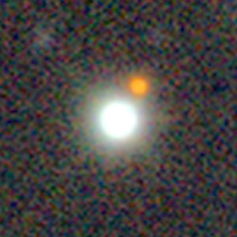TAG: GS 3: SCIENCE AND TECHNOLOGY
THE CONTEXT: In a groundbreaking discovery reported in Nature Astronomy, astronomers have identified J0529-4351, a black hole surrounded by the largest and brightest accretion disc ever found.
EXPLANATION:
- This celestial object stands out as the brightest entity in the universe, emitting light that surpasses anything observed before.
- We will delve into the characteristics of J0529-4351, shedding light on its enormity and the technological advancements that facilitated its recent detection.
The Enormity of J0529-4351
- J0529-4351’s accretion disc spans a staggering seven light years across, making it a colossal structure in the cosmic landscape.
- This disc serves as a captivating gateway to a place of no return.
- It is a domain where the gravitational forces are so intense that nothing, not even light, can escape.
The Brightest Object in the Universe
- The intensity of light emitted from J0529-4351’s accretion disc is awe-inspiring, registering at a mind-boggling 500 trillion times brighter than the Sun.
- This luminosity implies a voracious appetite, as the black hole engulfs material equivalent to the mass of our Sun every day.
- With a mass estimated to be between 15 to 20 billion times that of our Sun, J0529-4351 stands as the brightest known object in the universe.

Black Hole Feeding Frenzy
- J0529-4351’s brilliance is a remnant of a bygone era in the universe when black holes engaged in a feeding frenzy.
- Rapidly growing supermassive black holes, like J0529-4351, were once more common, as they attracted stars and gas clouds into their gravitational clutches.
- However, in the present universe, such feeding frenzies are waning, as the available gas has largely transformed into stars and settled into orderly orbits around dormant black holes.
The Age of Sleeping Giants
- Supermassive black holes in the current universe are mostly dormant, resembling sleeping giants.
- The once chaotic cosmic environment, where collisions between stars and black holes were frequent, has transitioned into a more stable state.
- Even if a star were to approach a black hole today, it would likely execute a slingshot maneuver, evading capture.
Accretion Discs: Unfriendly Territories
- Accretion discs, such as the one around J0529-4351, are not only gateways to the point of no return but also hostile environments.
- These discs resemble colossal storm cells, with clouds glowing at temperatures reaching several tens of thousands of degrees Celsius.
- The rapid movement of these clouds, reaching speeds of up to 100,000 kilometers per second, makes accretion discs inhospitable and perilous for any form of life.
Technological Advances and Discovery
- The discovery of J0529-4351 was made possible through a massive astronomical survey of the entire sky, facilitated by advanced telescopes and a ten-year partnership between Australia and the European Southern Observatory.
- Traditional search methods, avoiding the limitations of machine learning, were employed to identify extreme objects like J0529-4351, which might be overlooked by automated algorithms.
Black Hole:
- Black holes are points in space that are so dense they create deep gravity sinks. Beyond a certain region, not even light can escape the powerful tug of a black hole’s gravity.
- In other words, Black holes are regions in space where an enormous amount of mass is packed into a tiny volume.
Supernova:
- A supernova is what happens when a star has reached the end of its life and explodes in a brilliant burst of light.
- Supernovas can briefly outshine entire galaxies and radiate more energy than our sun will in its entire lifetime.
- They’re also the primary source of heavy elements in the universe.
- According to NASA, supernovas are “the largest explosion that takes place in space.”
Conclusion
- J0529-4351 stands as a testament to the vastness and complexity of the universe. Its discovery not only adds a dazzling entry to the cosmic record but also underscores the advancements in astronomical technology and international collaborations that enable humanity to unravel the mysteries of the cosmos. As we continue to explore the depths of space, J0529-4351 serves as a beacon, guiding our quest for understanding the most extreme phenomena in the universe.

